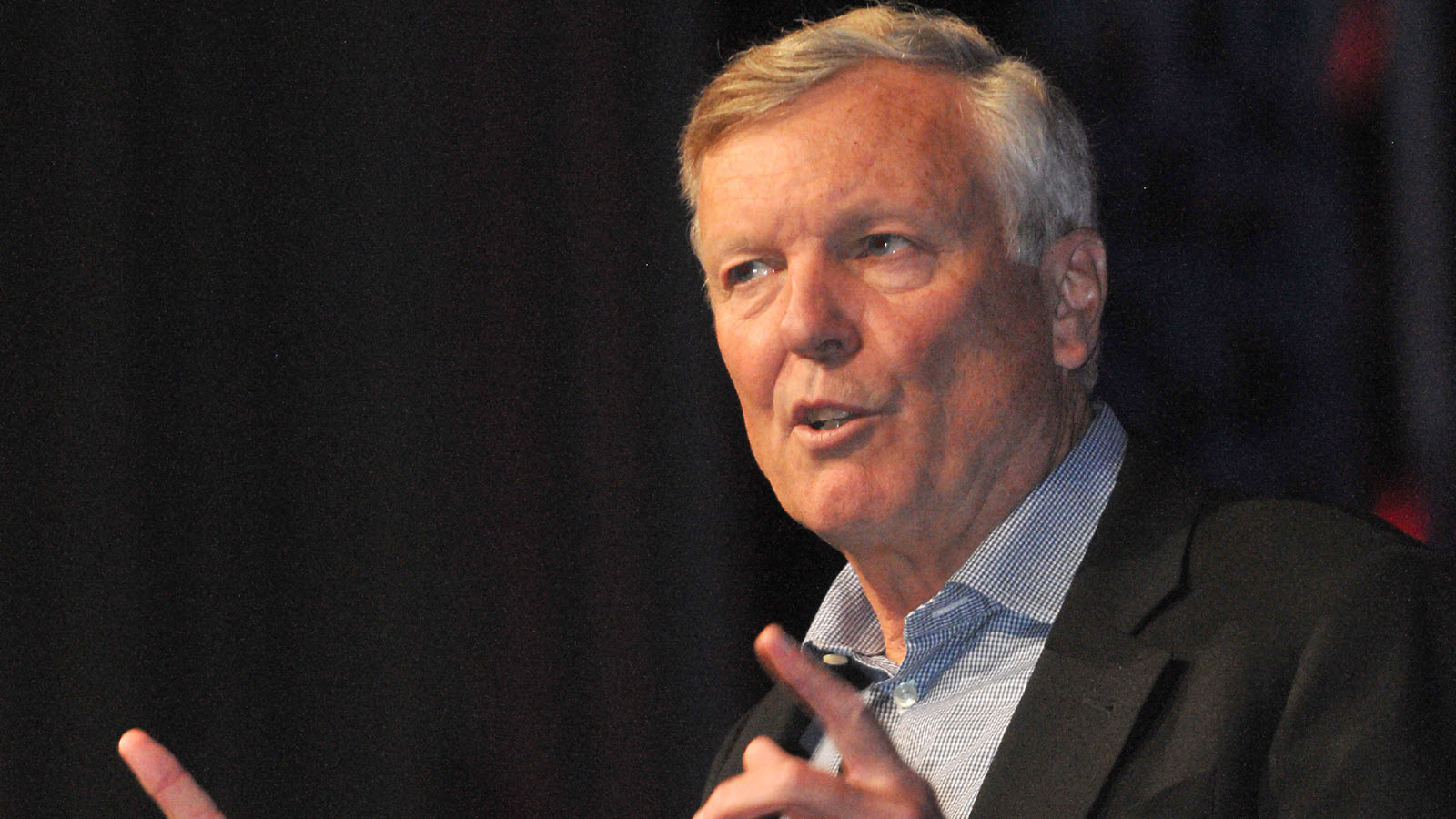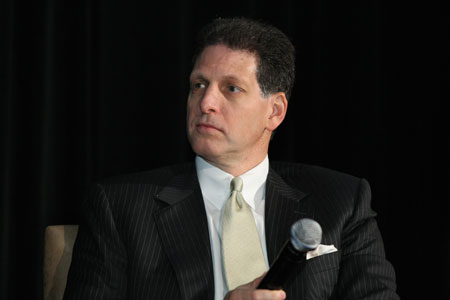Defending the Bundle
Charter Communications chairman and CEO Tom Rutledge has never been afraid to tout his belief in the continued strength of the cable bundle to about anyone who would listen, and this week was no different, even as his cable company doubled video losses in the most recent quarter. In Charter’s Q2 earnings conference call with analysts Friday, Rutledge again voiced his belief in the continued power of wrapping video, voice and data products together, blaming the perceived decline of video on reckless programmers.
Charter lost about 150,000 residential video customers in Q2, more than double the 73,000 it lost in the prior year. But Rutledge refused to blame the decline only on the trend toward smaller video packages from streaming services. According to him, equally at fault are content providers who have wrecked what had been a working model by letting customers share passwords for streaming services and making content available for free on their own apps and websites.

“Our video strategy today is to not look at video as a standalone business,” Rutledge told analysts on the call, adding that Charter sells connectivity. And to him, connectivity involves all products, not just broadband. Connectivity to the internet, to content networks and to each other via broadband, pay TV and wireless.
“There is still a lot of value in the bundle to a lot of consumers,” Rutledge said. “The problem with the bundle of video today is that the content companies that supply it have essentially put their services for free available everywhere, through TV Everywhere, excessive streams, password sharing, and free over the air television. It’s hard to compete with free.”
That shouldn’t be a surprise to anyone who has followed Charter for any length of time. Rutledge has consistently lamented password sharing among customers as a major pain and other executives may feel the same way, but they don’t say it nearly as much. That has attracted some ridicule from some analysts, but for the most part many see the focus on broadband as a strength for cable.
[embed]https://twitter.com/RichatTBD/status/1154739211897114625[/embed]
“We look at video as an attribute of our overall customer relationship,” Rutledge said. “We want to have the best video services of all the kinds available and make it easy for consumers to consume our product. We look it as an attribute of the connectivity relationship we have with the customer.”
That’s nice, but there is no denying that many cable operators are increasingly looking at video as more of a nuisance that is getting in the way of selling more profitable broadband service. Every major provider has more broadband customers than video customers, and the gap will only widen. Sure, they still want the video subscribers that buy the Platinum package with all the premium channels and spend $300 per month, but they’re getting more and more annoyed with customers that want really narrow packages for low prices that they are powerless to provide.
I have personally heard some operators say that they don’t even care that much about video price increases anymore -- if the price of a network or a broadcast station is too high, so what, they can just pass it along to the customer. And if the customer wants to switch video providers, so be it. Chances are cable broadband is still the best service around, so the operator just converts that subscriber to a broadband-only customer paying $65 per month for service instead of the bundled price of $45 per month. And there is considerably less hassle.

That may be a bit of an exaggeration, but it is getting clear that video is becoming less and less of a focus. MoffettNathanson principal and senior analyst Craig Moffett has been a cheerleader for accelerated video losses -- in one report he said a broadband customer is seven times more valuable than a video customer. After Charter reported its Q2 results, Moffett noted that its video losses accelerated to 2.2% in the period from 1.7% in Q1, but were still less than half the 5% rate of decline for the rest of the industry.
And it should be noted that customer relationships are on the rise, mainly because of broadband growth. Charter added 203,000 customer relationships in Q2, up from 196,000 last year. And with that, profit margins should grow as video-connected costs fall. Moffett noted that Charter’s cost of service decreased by about 1% -- the second consecutive quarter of declines -- and marketing costs were flat.
Related: Moffett: Let Video Find its Own Level
On the conference call, Rutledge said he doesn’t like raising video prices for customers, mainly because they don’t understand that the increase is coming from the content provider, not the distributor. And that has an impact on how that customer perceives the service provider as a whole. Think about that for a second. Look at the customer satisfaction surveys over the past few years and how customers say how much they hate their cable provider and love their broadband service, not realizing they are the same company.
“I don’t like raising prices to our customers,” Rutledge said. “Customers don’t know where the price increase is coming from and they attribute it to us and that affects our overall satisfaction and our overall relationship and our brand equity so to speak with the customer. I think hitting rates and asking people to disconnect is not a very attractive way to manage a video business. On the other hand, if you don’t fight the programmers to maintain some sort of price integrity for the customer, they’ll pass through a lot of product. It’s a balancing act from my point of view.”
Now programmers will argue, correctly, that developing and buying high quality programming costs money, and pay TV wouldn’t be pay TV without content. Broadcasters have said consistently that they get about 12% to 14% of the economics while representing 35% of total viewership. But I think they are missing a key point here. Cable operators aren’t really saying that their programming isn’t worth much, they’re saying that customers don’t want to pay that much for it. And the blame for that lies squarely in content’s court, according to Rutledge.
“What I really wish is that the price value of programming wasn’t being destroyed by the programmers,” Rutledge said. “The reason I say that is, if you do a 10% programming price increase and you lose 10% of your customers, you don’t really get anywhere and yet you’ve alienated a lot of people. That is actually happening.”
Rutledge argued that programmers don’t fully realize price increases on their revenue line because they make their product available for free, either directly or by ignoring what he claims is a “massive” amount of password sharing. And aside from the obvious financial pitfalls, those practices have other consequences.
“That changes the price value relationship with the customers and makes it impossible [for operators] to raise prices and generate revenue,” Rutledge said. “My wish would be that the content industry would manage their content and their copyright to their own benefit instead of pushing through price. We still think we have a lot of video customers and they don’t want to have price increases, so I expect continuous fighting for the foreseeable future.”
Multichannel Newsletter
The smarter way to stay on top of the multichannel video marketplace. Sign up below.
